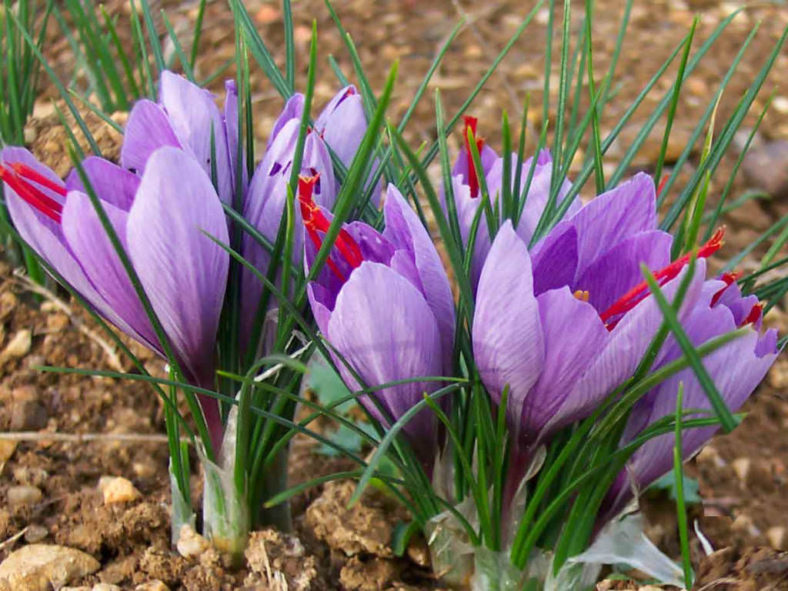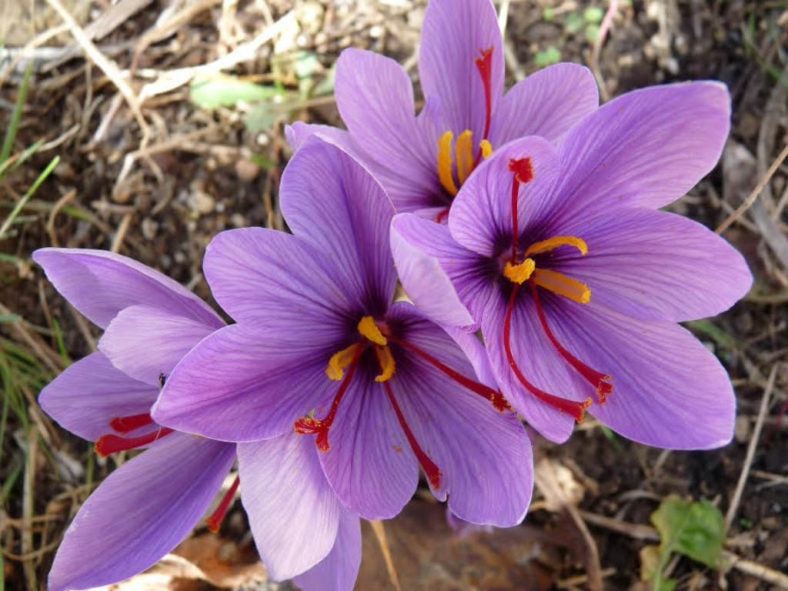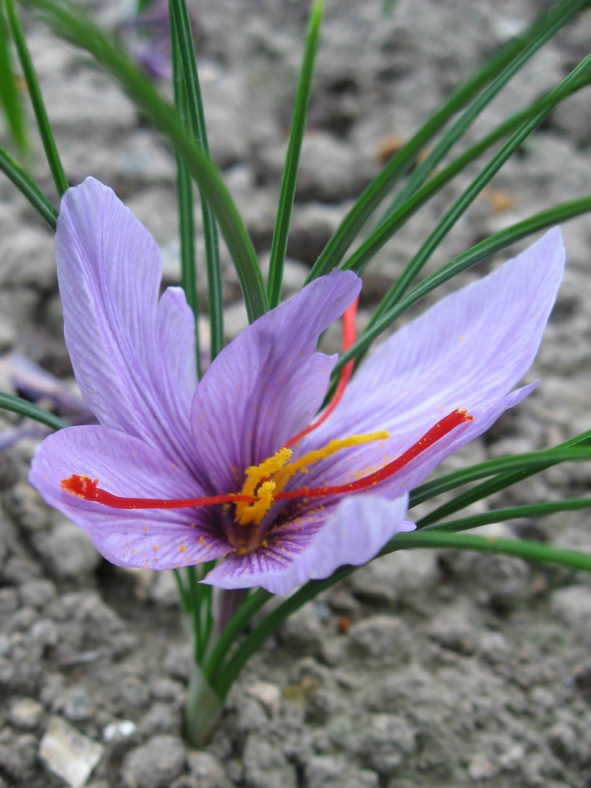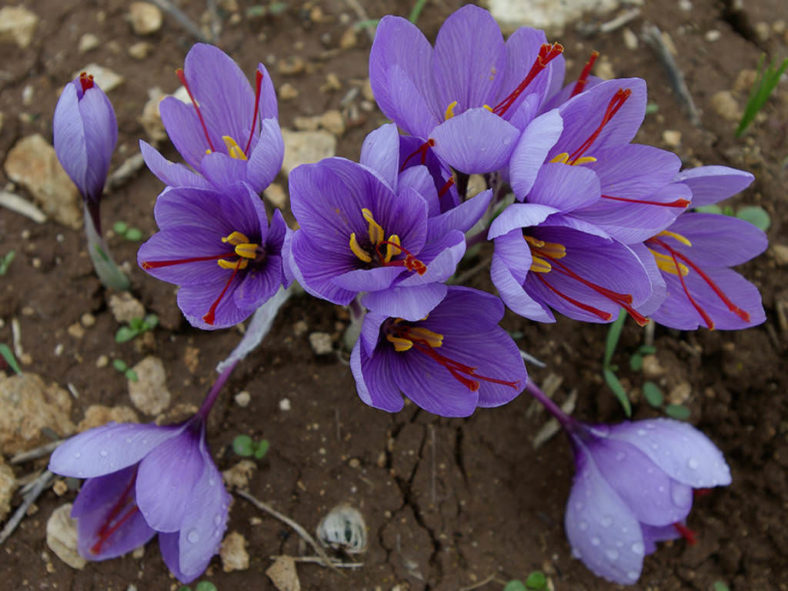Scientific Name
Crocus sativus L.
Common Name(s)
Saffron, Saffron Crocus, Autumn Crocus
Synonym(s)
Crocus officinalis, Crocus orsinii, Crocus pendulus, Crocus setifolius, Geanthus autumnalis, Safran officinarum
Scientific Classification
Family: Iridaceae
Subfamily: Crocoideae
Genus: Crocus
Origin
Crocus sativus is native to southern Europe and Asia.
Flower
Color: Lilac-purple
Bloom Time: Fall
Description
Crocus sativus is a perennial plant that grows up to 6 inches (15 cm) tall. Each corm produces several upright, cup-like, lilac-purple flowers with dark purple veins that bloom from early to mid-fall. Each flower has three long-style branches tipped with reddish-orange stigmas. The flowers close at night and open up in the morning. Basal, grass-like leaves appear slightly before bloom.

How to Grow and Care
In areas where Saffron Crocus are reliably hardy—USDA Zone 6 through 8 in the South, 6 through 9 in the West—you should plant the corms as soon as you receive them. Saffron Crocus does best in full sun and well-drained soil that is moderately rich in organic matter. Ideally, the site should be relatively dry in summer, when the corms are dormant.
Plant the corms 4 inches (10 cm) deep and 4 inches (10 cm) apart. If gophers, mice, or voles are a problem in your garden, plant the corms in containers or line the bed with a hardware cloth or a similar wire mesh. Flowers generally come up 6-8 weeks after planting, although occasionally, they wait until the 2nd fall to appear. Bloom lasts about three weeks. The grass-like leaves may emerge either with the flowers or soon after they occur. Sometimes, they wait until the following spring. In either case, the leaves persist for 8-12 weeks, then wither and vanish, leaving no trace of the corms below until the flowers appear again in fall. It's not a bad idea to mark the area where you've planted your corms so you don't inadvertently dig them up while planting something else.
See more at Growing and Harvesting Saffron Crocus.
Links
- Back to genus Crocus
- Plantpedia: Browse flowering plants by Scientific Name, Common Name, Genus, Family, USDA Hardiness Zone, or Origin
Photo Gallery
Click on a photo to see a larger version.




